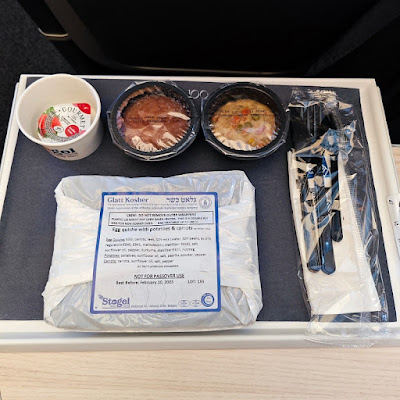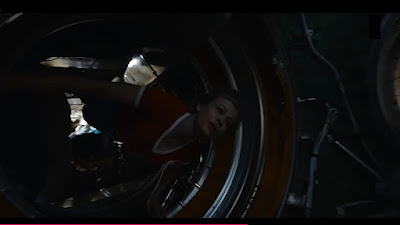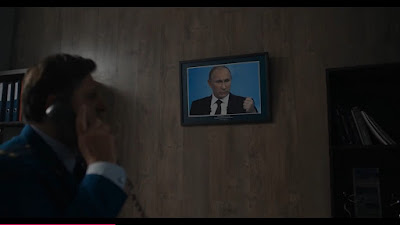07-017
Stogel
long-life Kosher Meal
After
writing many posts on Chinese translations of the Bible and other
extra-Biblical texts, I am going to move a bit backward this time. In this
post, I will talk about Judaism.
The
twin pillars of Judaism are the Hebrew Bible, or the Old Testament, and
the Talmud. (For sure, in Jewish point of view, there is nothing called
“Old” testament. In Judaism, there is only one Testament always.)
I have
listed out all vernacular Chinese translations of the Bible in my previous
posts. Some of those translations were based on the Hebrew Masoretic Text,
such as the 1970 Lü Chen Chung’s translation (呂振中譯本). So
technically, Chinese translations of the Old Testament are readily
available. But whether Jews would accept those Christian translations is
another case.
On the
other hand, translation of the Talmud into Chinese is still underway.
Translation of the Babylonian Talmud is being done by the Chinese
government and would still take some years to complete. And the translation of
the Jerusalem Talmud is not even under any plan. So, instead of talking
about the translations of Jewish sacred texts, I would rather share with you my
recent Jewish experience.
Back
in summer 2023, a colleague from Germany visited our office. He is a Jew, born
in Ukraine and immigrated to Germany at the age of 10. I learned some Jewish
stories from him. I was surprised to know that there are still Jews living in
Germany as I always think that all Jews that survived the Holocaust must now be
either living in Israel or in the US.
Weeks
later, I was given an opportunity to visit Munich. The trip would be in the mid
of October. I decided to turn the trip to a religious one. I carefully arranged
my flights so that I can have 2 extra days to travel around Munich. I hope I
can visit some religious sites in those 2 days, especially to those Jewish
religious sites in the city.
However,
after everything was planned, things happened. Just one week before my flight,
Hamas entered Israel, shooting everywhere, killed more than 1000 Israelis and
kidnapped 200 more to Gaza.
Is it still safe to visit those Jewish religious sites? Would I become a target? Should I change my plan? Luckily, it was still the second week of the Israel-Hamas war when I arrived Munich. At that time, the majorities were still supporting Israel. Now, it seems to be the other way round. So, I braved my heart, hopped onto my Finnair flight, heading to Helsinki, then Munich. My Jewish experience started immediately after boarding. Yes, I have reserved kosher meals for my flights.
Before
take-off, the cabin crew showed me the meal box and asked if I prefer to break
the seal myself or they can open it for me. I let them to open the box for me to
reheat the content. About an hour after, my Stogel long-life kosher meal was in
front of me during the meal serving time.
Let me
show you what is inside.

Stogel long-life Kosher Meal
Like the Hermolis kosher meal on my previous Cathay Pacific flights, Stogel kosher meal was sealed to guarantee kashrut. The ingredients of the meal are also clearly written. But Stogel uses paper box while Hermolis uses plastic.
I was
served “Hot Lunch Schnitzel” as dinner. It is a meaty meal and is not suitable
for Passover, because of the crackers inside. The meal set has a code, LL-HLM4.
Main course is Poultry Schnitzel with Rice & Vegetable (58%), with a
missing ‘c’ in the word ‘Schnitzel’. Side dishes include Fish Cocktail, Coffee
Pudding, Fruit Compote, Crackers and Halva. Ingredients of the side dishes are
printed on the seal. Ingredients of the main course are printed on another
label, affixed on top of the main course package.
I
opened the box and found all the dishes were neatly packed inside. The main
course was reheated by the cabin crew and the kosher certificate was on top of
the side dishes.
I decided
to finish the side dishes first, from Fish Cocktail to Coffee Pudding and then
Fruit Compote.
Many on
travel forums compare Stogel long-life meals with dog food. The Fruit Compote
is just mashed tomato and is horrible. But Fish Cocktail tasted good. Coffee
Pudding was so-so. It was not good but not bad either.
affixed on the package, not on the meal box.

After unwrapped the double layer plastic bags,
I was surprised to see the main course was also sealed.
After
finished all the side dishes, I curiously opened the package of the main
course. It was completely sealed in double layer plastic bags. I teared the
bags and found that the plastic tray inside was also sealed. The schnitzel is
made with turkey meat and rice is mixed with carrot, peas and corn.
Crackers
were just crackers. But it got a kosher seal printed on its package. Halva was
quite nice. We have something similar in Chinese cuisine but ours are made with
peanuts. Taste of the whole meal was not bad overall.
The
meal has an expiry date of 02/June/2025. According to the website of Stogel,
their long-life meals require no refrigeration and are fully self-contained. I
am not sure how can they make this possible. Rice in the main course is soft
and the carrot is juicy. How come this kind of food can be stored in room
temperature for 2 years without being spoiled? I asked the question on a forum
but no one can answer me.
Since
it was a long haul flight, I was being served a second Stogel meal in the morning,
a long-life “Hot Breakfast”. The code of the meal is LL-HB and this time, it is
parve. Main course was Egg quiche with vegetables. Side dishes were again Fruit
Compote and Fish Cocktail. The meal set was served with Crackers, Halva, and a
pack of Jam.

Side dishes are the same as the previous meal.
Let us open the main course. Again, the ingredients were printed on the package.
The
quiche was served with potatoes and carrots. To be honest, I have never seen a
slice of quiche in that shape. The taste was not bad but it definitely did not
taste like quiche.
On the
return flight, I was being served the exact same food. My advice to Stogel KSML
meal is, if you are picky, try your best to stay away from them. But if you can
eat anything and would like to know how Stogel looks like, then give it a try.
So,
that was the beginning of my religious tour and also my first Stogel KSML
in-flight meals. In the next posts, I will show you more about my Jewish
experience in that trip.
Go back to the Lobby ...














































